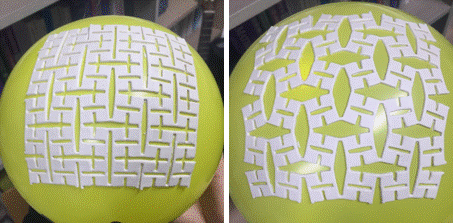In recent years, ‘meta-materials’, which have optical, acoustic and mechanical characteristics that can not be seen by conventional materials, have become a hot topic of material research. Auxetic is a mechanical meta-material with a negative Poisson’s ratio, which comes from the specific structure not due to the inherent properties of the material. Poisson’s ratio is the ratio of transverse strain to axial strain resulting from the normal stress of the material, and most of the materials we encounter in life have a positive Poisson’s ratio. Cork is an example of an auxetic that is commonly found in life. Since the cork has an internal auxetic microstructure, the Poisson’s ratio of cork is close to zero and does not expand in the lateral direction when compressed and can function as a cap. Due to their structural characteristics, auxetic materials are lightweight and has excellent indentation resistance and shear resistance. For example, auxetics can be used for bulletproof and aircraft members, and have better damping effect than positive Poisson’s ratio material. In addition, with negative Poisson’s ratio, good conformability can be maintained without buckling when attached to non-zero Gaussian surfaces.
In case of general soft material, elastic modulus is less than 100 MPa, and similar to the mechanical behavior of liquid, it has low compressibility and high Poisson’s ratio close to 0.5. From the material synthesis perspective, the modulus of elasticity or Poisson’s ratio of such a soft material can be varied within a small range of the same elastomeric category, but there is a limit to fundamentally control it. Since the auxetic behavior originates from a special structure and the difference of the porosity of individual auxetic structure, it is possible to have the modulus of elasticity and the Poisson’s ratio suitable for the user’s purpose through proper geometric design of auxetic structure. Our groups deal with customizing the mechanical properties of various soft materials in terms of material design and geometrical factors. Structural design has the advantage of having different mechanical properties even in the same material. Hierarchical and asymmetrical designs, for example, can be used to provide materials with different tensile and expansion ability in a single continuum body. Thus, it is expected that the present invention can be applied to various industrial fields including soft materials such as flexible and wearable devices and sensors, soft robots, and soft biomaterials by making the mechanical characteristics of the soft materials adaptable to the customer’s desired values.
